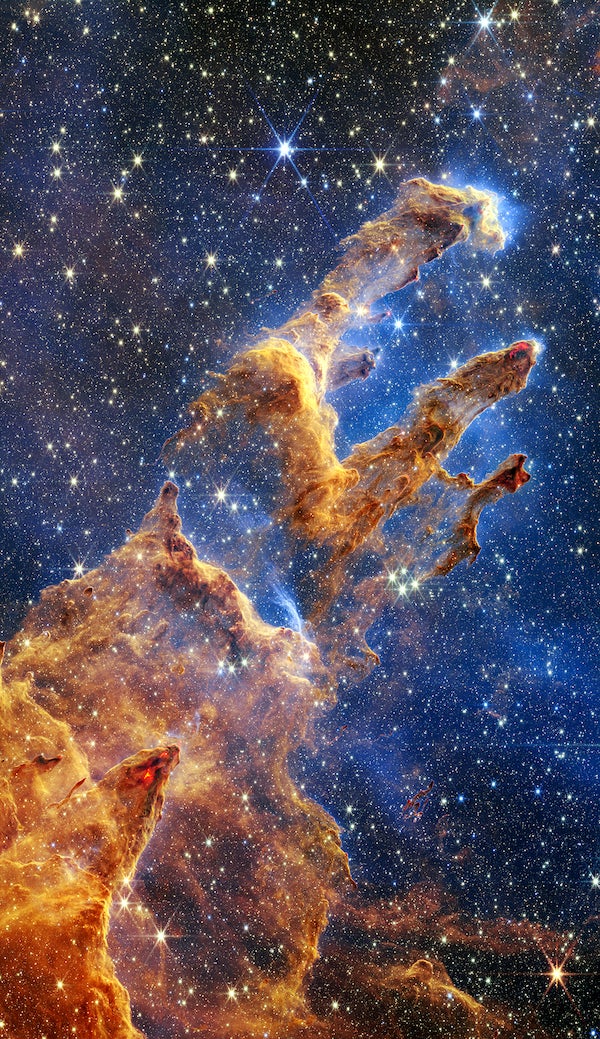
The April issue features a JWST image of a star early in its development. if protostars do not generate their own energy through nuclear fusion yet, what produces the infrared light captured by the telescope?
Daniel Smith
Rome, New York
Stars form from massive clouds of cold gas and dust. These clouds are so cold that their temperatures hover around 10 kelvins (some minus 442 F, or minus 263 C). When parts of a cloud collapse into denser regions — and there are various ways this might happen — the molecules within these collapsing portions begin to heat up. As molecules essentially fall toward each other into a clump, the pressure in the gas goes up as more mass is added. Increasing pressure causes the gas to heat up, and this heat is what generates the light the James Webb Space Telescope (JWST) sees.
JWST is perfect for studying protostars for two reasons. First, although protostars are certainly hotter than their surroundings, their temperature increases slowly and initially reaches only a few thousand degrees — not nearly hot enough to ignite fusion, which requires temperatures above 10 million K (nearly 18 million F, or 10 million C). Such low temperatures mean that much of the light a protostar puts out is at infrared wavelengths — the exact range in which JWST observes.
Second, any optical light a protostar does emit is absorbed by a thick envelope of gas and dust, which heats up slightly and reemits the remaining energy at longer wavelengths — again, much of which is in the infrared regime. So JWST is capturing both light from the protostar and emission from the warm gas and dust surrounding it.
Once a protostar gains enough mass for the corresponding pressure in its core to heat it to temperatures high enough for fusion, the energy created through fusion generates an opposing pressure that prevents further collapse, and a stable star is born. This can take millions or tens of millions of years!
Alison Klesman
Senior Editor









